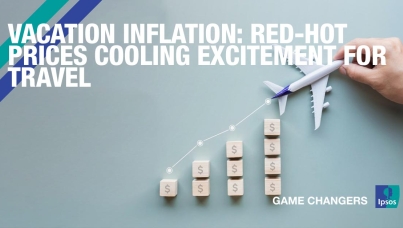A Formula for Profitable Loyalty
Most managers accept the importance of customer loyalty to the long-term success of their businesses. CEOs consistently rank it in their top five business challenges. And customer satisfaction and retention rank one and two among the most important issues for marketers, with brand loyalty coming it at number four, making three of the top five directly related to customer loyalty.
With all of this attention on customer loyalty, we would expect to see a couple of things. First, we would expect to see customer loyalty levels increasing. The reality, however, is quite the opposite. Customers have become less exclusively loyal to a brand than they have ever been. To say that brand loyalty has been on a decline over the past two decades is at the very least an understatement.
Second, we would expect that those firms that have embarked on strategies focused on improving customer loyalty would have seen tremendous financial gains. While we've all heard an occasional turnaround story, the reality is that most firms do not realize the expected gains from their efforts.
The solution to this problem isn't nearly as straightforward as many pundits would have us believe. While we can agree that a continuous decline in customer loyalty isn't a good thing, the answer isn't as simple as improving customer loyalty heals all ills either.
Without question, loyalty is important. Loyal customers hang on for years, devote a larger share of their wallet to the company, and recommend the company to their friends. Customer loyalty, in short, helps drive profits.
But what too many companies fail to understand is this: Loyalty does not always equal profits. As a result, many companies don't know how to recognize --and thus encourage--the kind of customer loyalty that's really worth having.
Instead asking whether you have enough loyal customers in your customer base, you need to ask yourself three more complex questions: 1) which loyal customers are good for the business, 2) how do we hang onto them, and 3) how do we get more customers like them.
The place to begin any loyalty strategy is to determine which loyal customers are profitable and which are not. A closer examination of these two types of customers always reveals very different reasons for their loyalty. Unprofitable loyal customers tend to be loyal for one of two reasons: 1) they are driven by unprofitable pricing or exchange policies, or 2) they demand an excessive amount of service that they are not willing to pay fairly to receive.
Profitable Loyals (our term for customers who rate highly on their attitude and behavior toward the company, and on their value to the company) on the other hand are almost always driven by differentiating aspects of our product or service offering. While not every customer has the potential to be a Profitable Loyal, it is important to remember that they are the ideal customers of the firm--they feel an attachment to the firm/brand, have a high share of category spend, and contribute profits to the firm.
Therefore, strategies aimed at improving customer loyalty should focus on understanding what differentiates our offer from competitors to Profitable Loyals. Once we know this, we need to work continuously to strengthen this competitive advantage.
Timothy Keiningham is global chief strategy officer and executive vice president at Ipsos Loyalty. Tim's research on the importance of loyalty has received over a dozen prestigious scientific awards, including being recognized by the INFORMS Society for Marketing Science as having written one of the top 20 most influential articles of the past 25 years. A prolific writer, Tim has authored and edited eight books. His most recent book, Why Loyalty Matters, provides compelling insight into how our loyalties, large and small, lay the foundation for our happiness, and determine the kind of world we live in. The book offers a comprehensive guide to understanding what loyalty is, what it isn't, and how to unlock its power.



